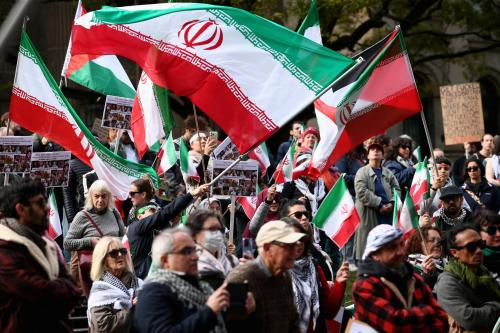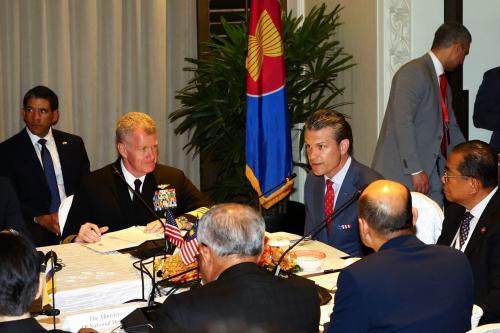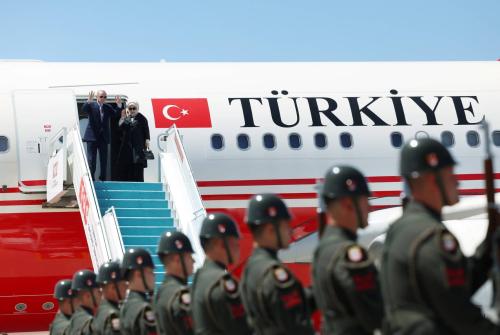This paper appears as chapter 2 of Restoring the Balance: A Middle East Strategy for the Next President. See the book overview and executive summaries for information on other chapters.
EXECUTIVE SUMMARY
OVER THE PAST FIVE YEARS, Iraq has become one of the most divisive and polarizing issues in modern American history. It is now a subject on which Republicans and Democrats tend to disagree fundamentally about the past (the reasons for going to war), the present (the impact of the “surge” in American forces), and the future of American policy (how quickly, and in what way, American forces should leave Iraq). Reflecting this divide, the two presidential candidates staked out starkly opposite positions during the campaign, with much of the public debate more emotional and ideological than substantive.
With the campaign over and a new president entering office, the debate should change to one of substance over politics. Recent trends suggest that the United States may be able to reduce significantly its forces in Iraq fairly soon, premised not on the certainty of defeat, but on the likelihood of some measure of success. The past eighteen to twenty four months have seen a remarkable series of positive developments in Iraq that offer hope that the United States may be able to ensure stability in Iraq while redeploying large numbers of American forces sooner rather than later.
The likelihood of this outcome should not be overstated. Because of the remarkable developments of recent months, it is more than just a long-shot, best-case scenario—but it is hardly a sure thing. Challenges still abound in Iraq, and their nature changes over time even as the overall risk they pose slowly abates. Thus, as a new crop of problems moves to center stage, coping with them will require the United States and its Iraqi allies to make important shifts in strategy and tactics rather than to just stick with approaches that succeeded against problems now receding in importance.
In our judgment, now that the surge is over, any further drawdowns should be gradual until after Iraq gets through two big rounds of elections of its own—provincial elections to be held perhaps in early 2009, and follow-on national elections. These have the potential either to lock in place important gains or to reopen old wounds. But starting as early as 2010, if current trends continue, President Obama may be able to begin cutting back on U.S. forces in Iraq, possibly halving the total American commitment by late 2010 or 2011, without running excessive risks with the stability of Iraq and the wider Persian Gulf region.
Faster reductions would be ill-advised. But if undertaken nevertheless, it is important that they be balanced. Both combat and support functions from the United States will be necessary for years to come in Iraq; rapid drawdowns that leave an imbalanced residual force without major combat formations would be worse than rapid cuts that preserve significant combat capability.
This approach suggests another difficult year or two ahead for the brave and committed men and women of the U.S. armed forces, especially as the United States likely undertakes to increase forces in Afghanistan modestly in 2009. Although the American military is under considerable strain, most trends in recruiting, reenlistment, and other indicators of morale and resilience are relatively stable. And with the surge over, the worst of the overdeployment problem is beginning to pass. Compared with the alternative of risking defeat in a major war vital to critical American interests, concerns about the health of the military should not therefore, in our judgment, be the main determinant of future strategy.
Our suggested approach is “conditions-based” and somewhat gradual in the time horizon envisioned for reducing American forces in Iraq. But it also foresees the possibility that most (though not all) main American combat forces will come out of Iraq by 2011, and it further argues that the United States needs to continue to seek ways to gain leverage over Iraqi decisionmakers rather than assure them of an unconditional and open-ended U.S. commitment.
Although this approach matches neither of the divergent strands of American thought prevalent before the election, it thus parallels aspects of both. Similarly, it reflects important elements of Iraqi political reality if not its recent rhetoric. Iraqi prime minister Nouri al- Maliki has partisan incentives to favor rhetoric calling for rapid U.S. withdrawals, and he may overestimate his own military’s ability to perform in the absence of U.S. troops. But his actual ability to secure Iraq without a significant U.S. force has serious limits, and his own commanders’ awareness of this may yield an emphasis on aspirational goals for U.S. withdrawals rather than binding commitments. Implementation details always matter in Iraqi politics, and there may be more room for a continuing U.S. presence than there sometimes appears to be in the declaratory stances of Iraqi politicians.
The Brookings Institution is committed to quality, independence, and impact.
We are supported by a diverse array of funders. In line with our values and policies, each Brookings publication represents the sole views of its author(s).




